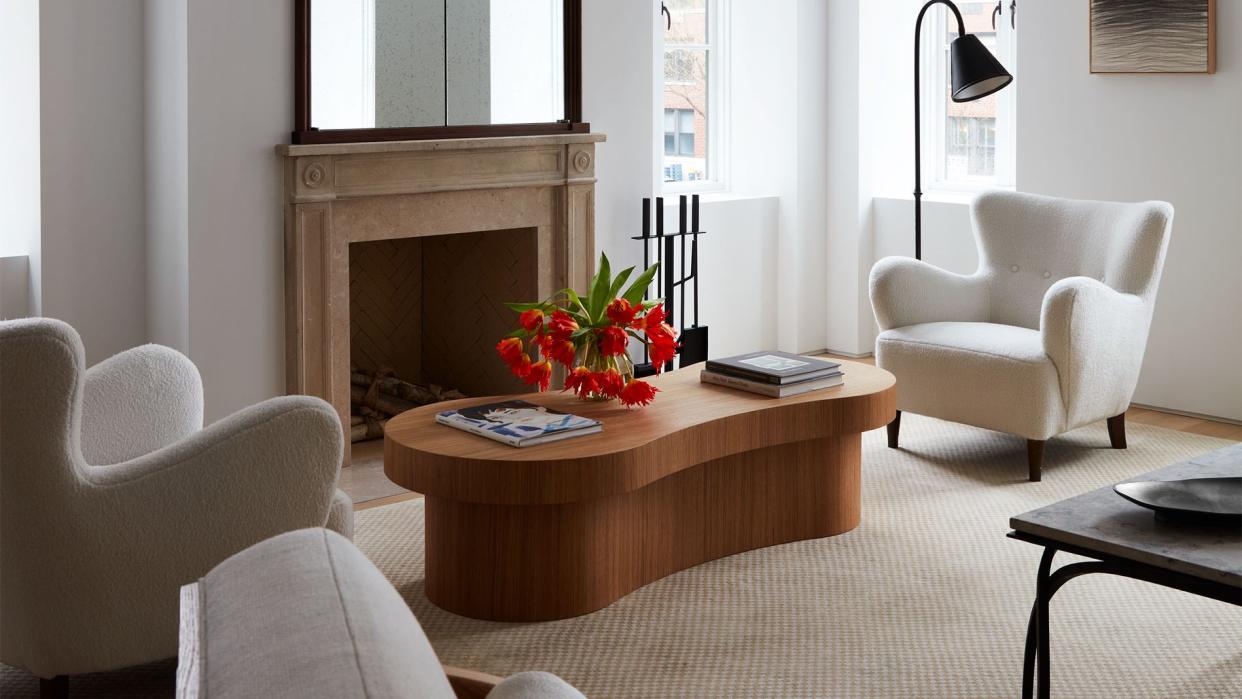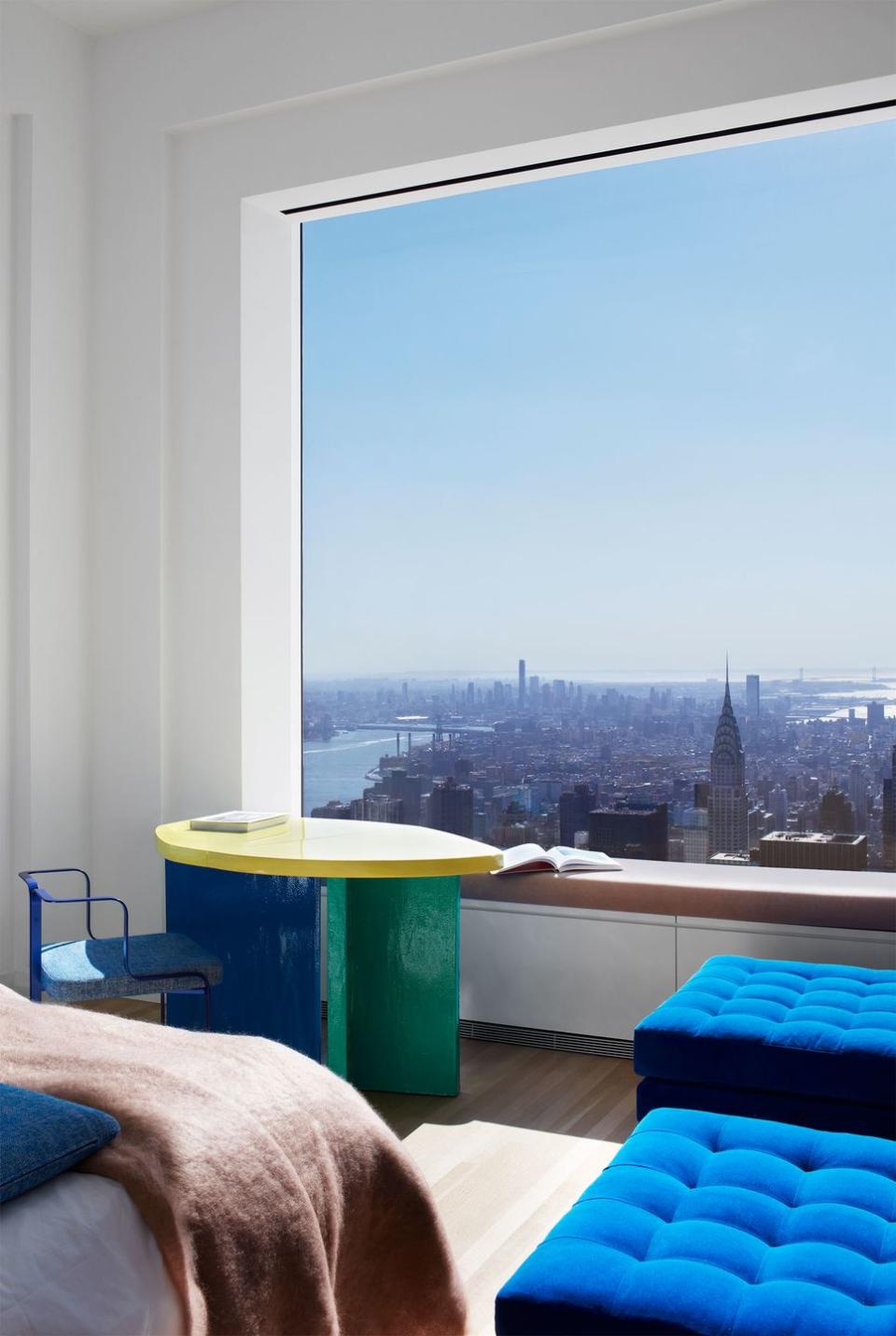Can You Find the Hidden TV? Sneaky Solutions for Stylishly Hiding Unsightly Tech

We love the entertainment provided by screens and stereos and the convenience of cutting-edge appliances and devices—but let’s be honest, we hate seeing all those ugly boxes and cords out in the open. That’s why architects, designers, and homeowners alike have been working to conceal home technology for nearly as long as we’ve had electricity.
“It is a battle because we want to keep the architecture pure,” says Crina Arghirescu Rogard, a New York City–and Paris-based architect whose artfully minimalist interiors are packed with covered-up tech, from imperceptible magnetic access panels to barely-there roller shades. “There are many ways to camouflage things from a distance.”

At the top of the list of offenders is the television, which only seems to grow in scale every year. “It’s always an eyesore, especially when it’s in a living room,” says Jarvis Wong, a New York City–based interior designer. But there are numerous methods for making it disappear. Wong has cached enormous TVs within custom built-in cabinetry and once replaced a unit with a projector that descends from a ceiling soffit on a motorized lift. Rogard has used mechanized hoists that stow under a bed when the television isn’t being watched, as well as mounts that slide a screen sideways out of a wall.
But not every gadget-stashing solution needs to be so high-tech; ELLE DECOR A-List Titan Juan Montoya frequently deals with screens in a more playful manner. At his country house in Garrison, New York, he devised what he calls a guillotine—a wooden panel raised by rope and pulley that conceals a TV right beside the fireplace. Other times, he has simply used a curtain on a rod. “It gives you the sense of a window,” he says. Designers Ashe Leandro have cleverly devised their own ways to conceal TVs—in the Park Avenue living room in the photo above, the tech eyesore sits covertly behind a custom mirror with a hinged panel that rotates open.
Montoya also loves filling rooms with music but doesn’t like seeing speakers everywhere. As a solution, he has recessed them behind ceiling treatments, including a dining room where he covered the expanse in straw. Rogard often uses speakers from Stealth Acoustics and Sonance that get plastered directly into walls so they’re completely invisible.
In kitchens, hidden appliances have been trending for years, as food-prep spaces blend into living spaces, which has encouraged manufacturers to invent products that are stealthier than ever. “The biggest change has been in hoods,” which are no longer necessary, says Piotr Paradowski, who runs Poland-based Paradowski Studio with his wife, Zuza Paradowska.
Above: Workshop/APD and Todd Raymond designed custom folding panel doors to hide the ovens, coffeemaker, and refrigerator—and even the sink—in a New York City kitchen.
Subtle kitchen ventilation started with pop-up downdraft hoods but has moved on to extractors that remain flush with the countertop, Piotr says. The Paradowskis have also tucked wall ovens behind access panels that slide into the wall to reveal the appliances only when needed. “We didn’t want it to look like a kitchen,” Zuza says, “so during the day, you’re not bothered by any of the mess.”
There is also, of course, the continual struggle with cord and charger clutter. That’s where more intelligent solutions are required. When Wong designed a handsome custom desk for a home office, for instance, he didn’t want it ruined by bundles of computer cable. “We added a removable panel under the desk,” says Wong, where connections can be made to concealed wires, after running cables through a slot in the desktop. “If you want to be really meticulous, you tape the wires behind the monitor stand,” he says. To minimize visibility of living room lamp cords, he routinely uses floor outlets paired with custom rugs that have slots for passing cords through, resulting in light fixtures that appear totally untethered.
But all the time spent on conjuring such illusions leaves Rogard asking a larger question: “Why doesn’t technology respond to the demands of architecture and design?” It seems obvious that since the entire point of camouflaging is to create something aesthetically pleasing, why not just keep that in mind before a piece of tech is even created? “If we design products better,” she says, “they might actually be a pleasure to look at.”

This story originally appeared in the Winter 2024 issue of ELLE DECOR. SUBSCRIBE
You Might Also Like


